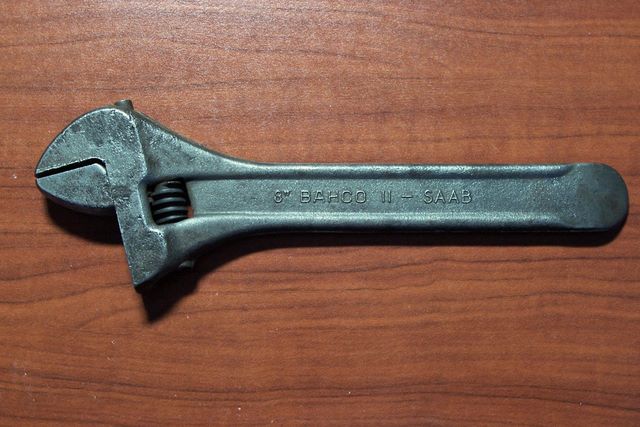 Bruce's Bahco Collections
Bruce's Bahco Collections
On
November 5, 1913, the board decided to
prepare a wrench for export to
Rolf
Nyström provided the
following information regarding
the designation
CLYBURN.
Clyburn
relates
to
a wrench
produced in
On 21 December
1914 H.
Brynge received
patent
no. 40417 The text
"BAHCO-CLYBURN"
and
patent
no. 40417 were
on the
wrenches until
1924.
On
October 17, 1914 models
70-78 were introduced.
In the catalogue,
sizes
76,77
and
78 are not available. In
all likelihood, they were
never manufactured.
70-Series
wrenches
had a 15-degree
angle
between the head
and
handle,
had left-handed
threads
and
was
fully hardened.
No. 70
gripping
capacity
19 mm
length
155 mm
(6
")

No. 71
-
"-
26 mm
-"
- 205
mm
(8
")
No. 72
-
"-
30 mm
-"
- 255
mm
(10
")
No. 73
-
"-
34 mm
-"
- 305
mm
(12
")
No. 74
-
"-
43 mm
-"
- 380
mm
(15
")
No. 75
-
"-
53 mm
-"
- 455
mm
(18
")
Along
with
70-series,
a
wrench
was produced
with
a 45 degree
angle
between
head
and handle, the 81-87 series.
Grip
capacity and length
are
identical
to
70 series.For
example,
72
=
82.
Wrenches
81-87 have
never been
seen with
the
"BAHCO-CLYBURN".label.
By the year
1950, sizes
86 and
87 were manufactured
with a smooth-shank.
Replacement
of a
welder meant that
the head and shaft
of 86
and
87 could be forged
separately, and then
welded
together..
In
1924
the head,became
narrower on
both
70
-
and
80-series
wrenches.
In
the late
1940s
it was decided
that the
manufacture
of
wrenches
81-85
would
cease.
Wrench
No. 69
was first produced
1926
The first model
was
No. 29
but changed to
69 in
June 1926.

Grip
capacity was
12.5
mm.
Length was
110
mm (4
").
In
1954, the handle
of the
70-series
wrenches changed. The
width of
the shank
edges
was reduced while
maintaining thickness
The label was changed to read
AB
BAHCO
Instead of
A.B.
B.A.
HJORTH &
Co..
In 1969
production of the 70-series
wrenches ended.
Special
design
No.
30
Was designed
as a bicycle
wrench.
Production
began in 1923
Thinner
head
than the corresponding
width
of the
70-series.
Tire
remover at the rear.
Grip
capacity 19mm,
length
155 mm
(6
")
The model number
was changed
in
March 1926 to 10
No.
11
came into production
in May
1926
Has
the same
head shape
and
grip
aperture
as
No.
31
The length
is
205
mm
(8
")
Equipped
with
tire remover.
No.
11A
was first produced
in May
1928th
Was the same as
No. 11
but
holes
in the handle
instead
of the
tire remover.
No.
13
came into production
in February
1926 and ended in
the late
1940s.
It was like No.
73
but
with a tire
remover at the end of the
handle.
No.
10B
was produced
from late in 1930 until1951.
It was identical
to the
No. 10,
but
with a
simpler design and
thus
cheaper.
Bicycle wrench
No. 15
was produced from 1928 until the late 1940s.
The jaw opening was at a right angle to the handle. The moveable jaw runs
outside of the shaft. A adjusting screw works against the toothed edge of the
shank.
Had a tire remover at the
end of the handle. The handle and jaws were drop forged.
Grip capacity 30mm and
length 150 mm
Based on the above description, the model 15 must have been of a style similar
to the old Monkey Wrench or today’s American style pipe wrench.